What is tricuspid stenosis?
What is tricuspid stenosis?
Tricuspid stenosis is narrowing of the valve between the right atrium and right ventricle. Tricuspid valve prevents backflow of blood into the right atrium when the right ventricle contracts. Right atrium is the upper chamber which receives blood returning from the whole body. Right ventricle, the lower chamber, receives blood from the right atrium through the tricuspid valve and pumps it to the lungs through the pulmonary artery.
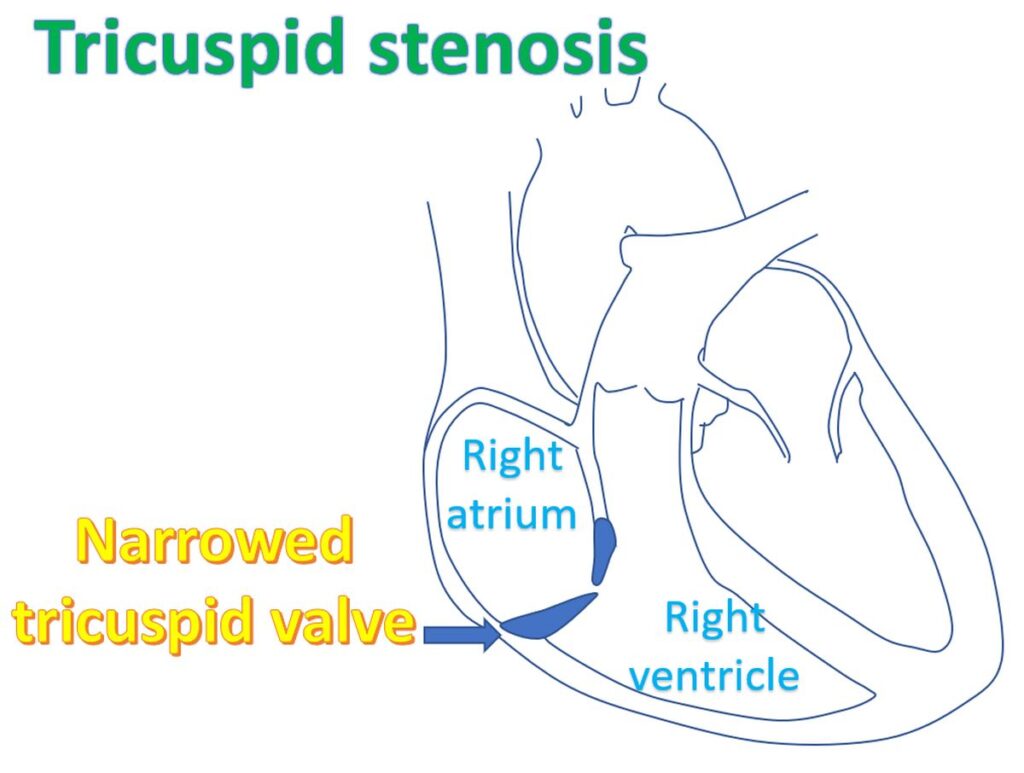
Commonest cause of tricuspid stenosis is rheumatic fever, a disease which involves major limb joints and heart valves. Another disease which can cause tricuspid stenosis is carcinoid heart disease. Carcinoid heart disease is due to carcinoid disease in which a tumour secretes certain hormones into the blood which can damage the heart valves. Birth defect of tricuspid valve known as Ebstein’s anomaly may also produce tricuspid stenosis. All these conditions can produce a leak of the tricuspid valve along with narrowing of its orifice.
When the tricuspid valve is narrowed, right atrium finds it difficult to empty blood into the right ventricle. Right atrium enlarges and thickens to accommodate the extra blood which pools up. Back pressure is also transmitted to the great veins from which right atrium receives blood. These are the superior vena cava from the upper part and inferior vena cava.
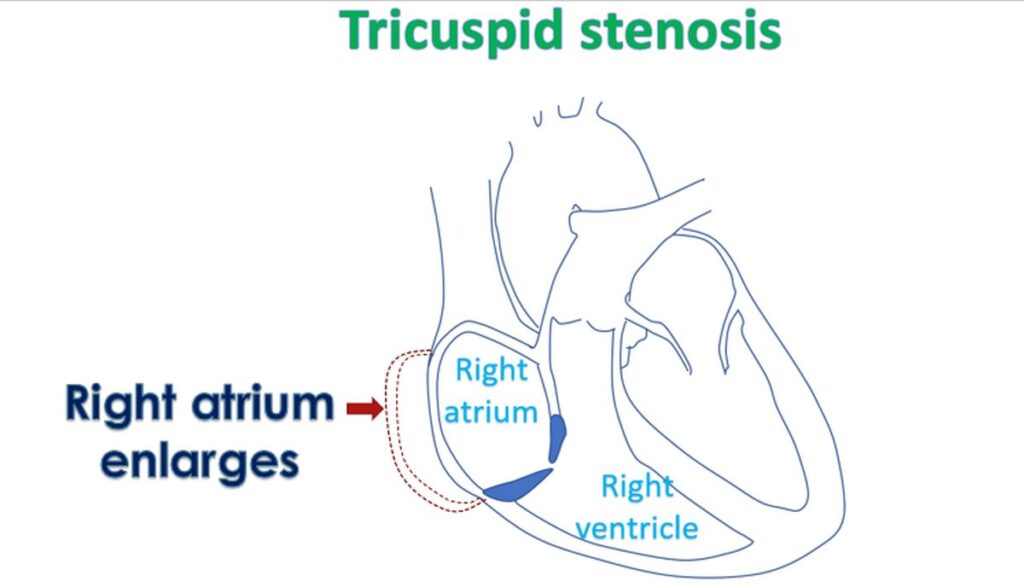
Increased pressure in superior vena cava manifests as enlarged veins in the neck. When the pressure in the inferior vena cava rises very much, the liver becomes congested. Fluid starts collecting under skin of the legs and in late stages in the tummy. Function of the liver may also be affected in the long run in severe cases.
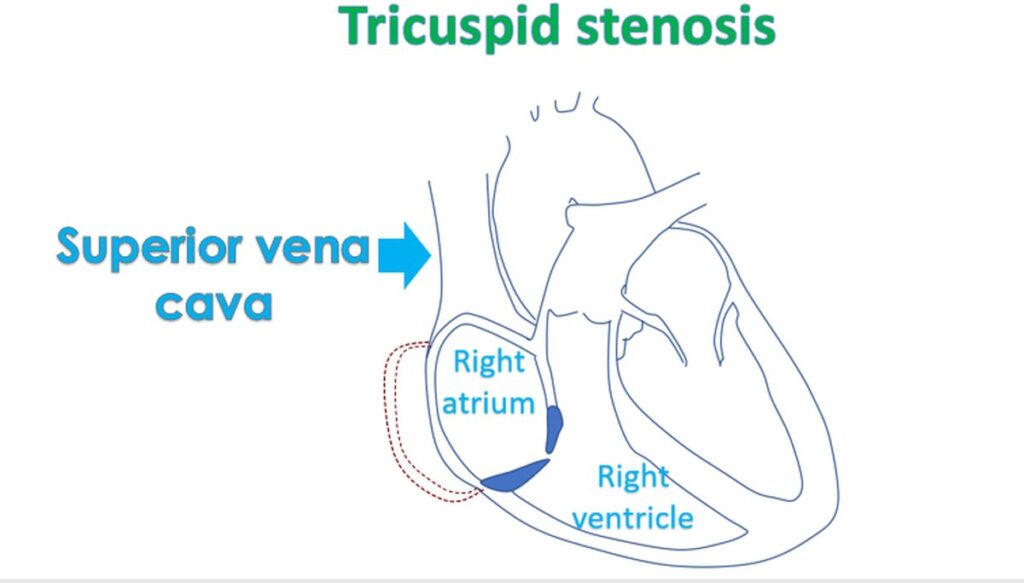
Those in early stages of heart failure due to tricuspid stenosis can benefit from medications. A group of medications known as diuretics which increase the urine output will relieve the congestion of the liver and reduce the collection of fluid under the skin. They are also useful in reducing breathlessness when there is associated disease of the mitral valve.
Severe narrowing of the tricuspid valve can be relieved by a procedure known as balloon valvotomy. In this procedure, a small tube with a special balloon attached to it is introduced through a small hole made in the groin. The tube known as balloon catheter is guided across the narrowed tricuspid valve using X-ray imaging in a special room known as cardiac cathlab. The balloon is then cautiously inflated to relieve the obstruction of the valve. This procedure does not need opening up the chest or heart.
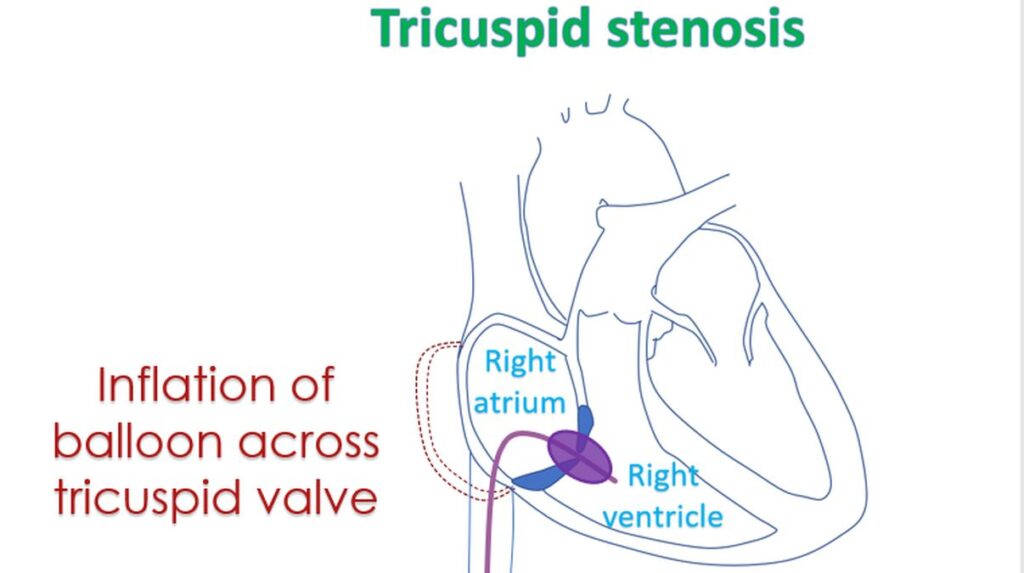
When balloon tricuspid valvotomy is not possible as when the valve has significant leak in addition to narrowing, open surgical repair is needed, in an open heart surgery. A grossly damaged valve may have to be replaced with an artificial valve. Artificial valves need life long medications to prevent the formation of clots within them.
Very often narrowing of tricuspid valve is associated with diseases of the other valves like the mitral valve and aortic valve. Narrowed valves can be enlarged by similar balloon procedures sometimes. But many a time, they may have to be replaced or repaired in an open surgery. When more valves are severely diseased, the seriousness of the disease is also more.
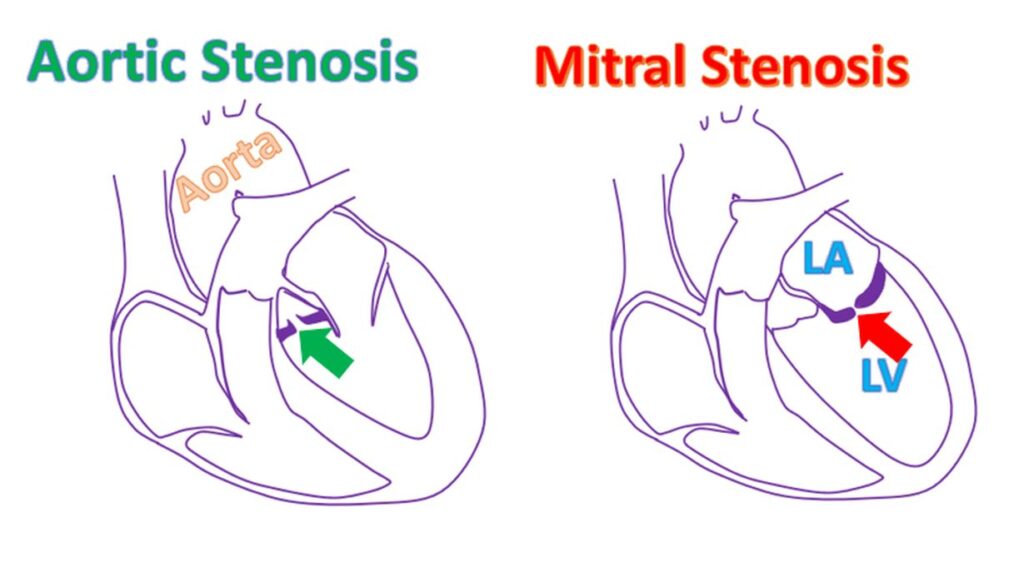
Those with carcinoid heart disease will need surgery for the underlying carcinoid tumor. When the disease is caused by rheumatic heart disease, prevention of recurrence of rheumatic fever is important. This is by giving an antibiotic, usually penicillin at regular intervals, on a long term basis. Improvement in living standards like avoiding overcrowding also reduces the chance of recurrence of rheumatic fever.



